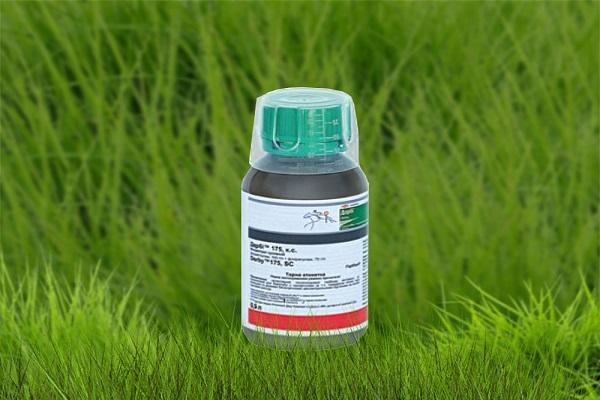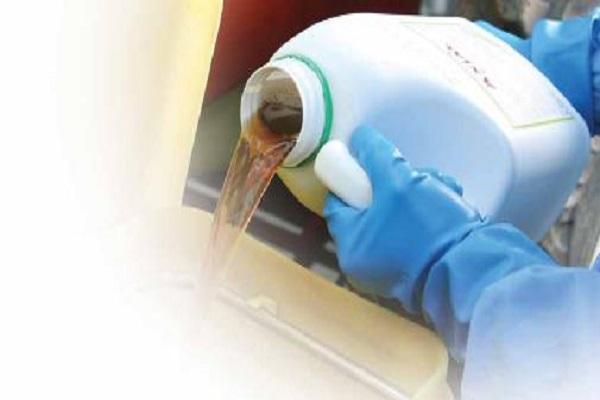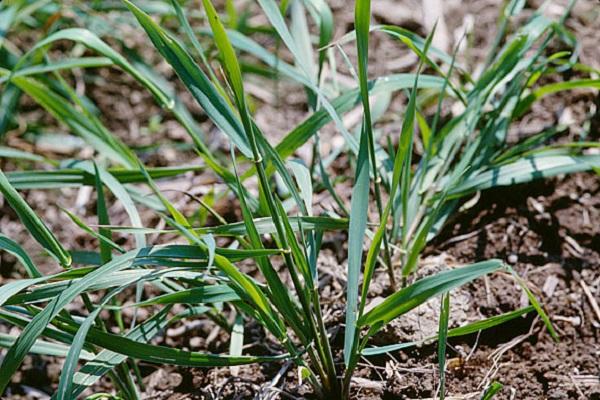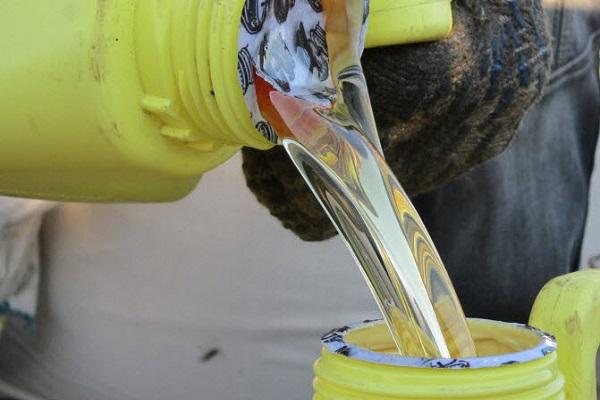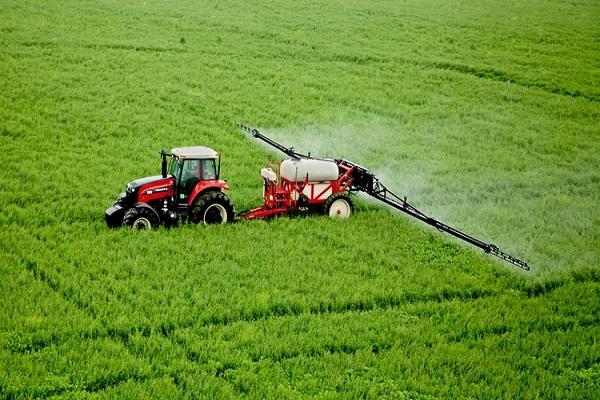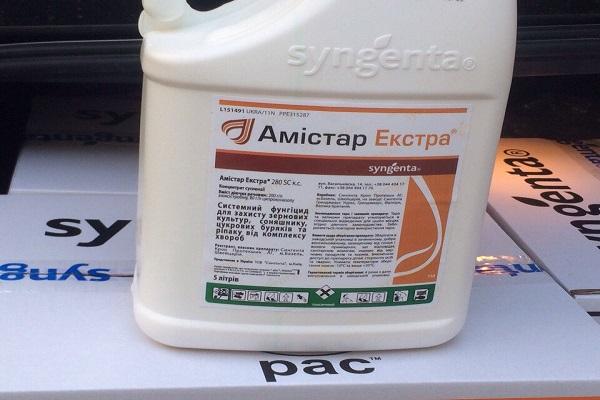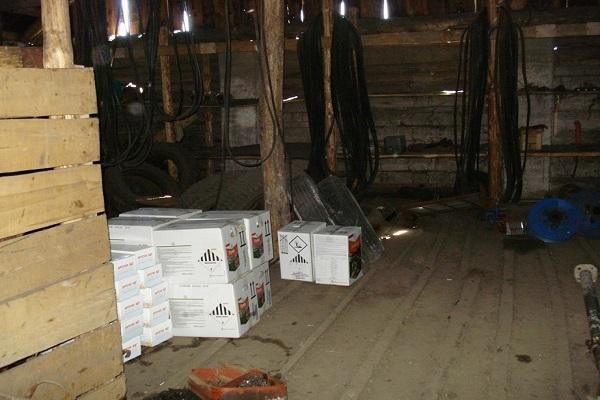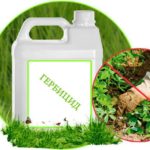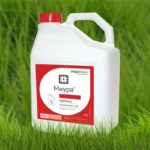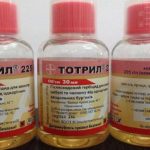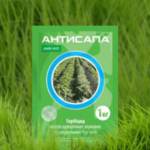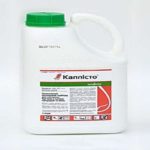Professional cultivation of barley and wheat requires regular monitoring of weed germination. Overgrown weeds threaten grain yields. Derby herbicide is used as a systemic control and for a sustainable effect. The elements present in its composition are capable of eliminating broad-leaved weeds. The greatest susceptibility to the pesticide is manifested in plants in active growth with 2 leaves.
- Composition and release form of the Drug Derby 175
- Advantages and disadvantages
- Mechanism of action of the herbicide
- Spectrum of action
- Period of protective action
- Consumption rate of working solution
- Preparation of the working mixture
- Instructions for use
- Precautionary measures
- Phytotoxicity
- Possibility of resistance
- Compatibility with other tools
- How to store it correctly?
- Analogs
Composition and release form of the Drug Derby 175
Derby 175 is a systemic herbicide. The pesticide contains two active elements that have the same mechanism.
The pesticide contains the following active ingredients:
- florasulam 75 g/l;
- flumetsulam 100 g/l.
The chemical class of the active element is triazolepyrimidines.
The combination of 2 different molecules leads to a fairly high rate of herbicidal activity against sensitive weeds, including some resistant to the effects of 2,4-D (tenacious bedstraw, odorless chamomile, common chickweed, field navel).
The herbicide is used when sowing wheat and barley. The drug is packaged in 500-gram plastic containers and presented in the form of a suspension concentrate.
Advantages and disadvantages
The advantages of using Derby pesticide include the following:
- The drug is able to have a systemic effect on broad-leaved types of weeds.
- It is absolutely compatible with most chemicals.
- Destroys even those weeds that are very overgrown.
- The use of the drug does not limit subsequent crop rotation; there are no consequences.
- Long application time (for the appearance of the flag leaf of cereals).
- Compatibility with other agrochemicals at a high level.
- Derby can be used in cool weather at temperatures above +7 degrees.
- Stable manifestations are recorded in relation to durum and soft wheat, winter and spring barley.
- The product is resistant to rain after 2 hours of treatment.
- Derby is classified as a low-toxic drug of class 3.
- The pesticide protects grain crops until harvest.
The drug is practically non-toxic to animals and birds. The pesticide has restrictions on use in the sanitary zone near fishery reservoirs.
It is prohibited to discharge the herbicide into sewers or any water bodies.
Mechanism of action of the herbicide
Both active elements of the pesticide are inhibitors of the biosynthesis of essential amino acids due to the inactivation of the enzyme acetolactate synthase.
The pesticide is highly effective in controlling bedstraw even at a growth stage of more than 20 cm and the formation of 14 rings.
The speed of influence on sensitive types of weeds is high after 2 days, final destruction is observed after 3 weeks. Signs of weed death appear after 7-21 days. Elimination of weeds is observed 21 days after application.
The protective effect after use lasts for 2-3 weeks.
Spectrum of action
The spectrum of effects of the drug includes:
- grass of annual and perennial dicotyledonous type, including thistle and thistle;
- cereal weeds.
Effective control of overgrown dicotyledonous weeds, weakly sensitive to sulfonylureas: blue cornflower, field hatchet, tenacious bedstraw, field violet.
Period of protective action
Derby can control only those plants of sensitive types of weeds whose seedlings have been sprayed with the product.
In addition, the soil effect of the pesticide on weed seedlings that have just emerged is short-lived - only 2-3 weeks, due to the absorption of Derby by the root system.
Based on the typical composition and stage of emergence of the weed, weather conditions during the growing season, the weeds begin to die 2-3 weeks after spraying, and a protective barrier is provided to the crops before harvesting.
Consumption rate of working solution
The regulations for pesticide spraying are presented in the table.
| Culture | Consumption rate ml/ha | Processing method and period |
| Wheat | 0,05-0,07 | It is applied during the growing season - from the tillering stage to the flag leaf of the plant |
| Barley | 0,05-0,07 | It is applied during the growing season from the tillering stage to the flag leaf of the plant. |
Preparation of the working mixture
The working mixture is prepared before use. A third of the tank is filled with clean water, the required volume of the drug is added and mixed well. Then the liquid is added to the edge and the solution is stirred again.
Preparing the mixture and filling the spray tank is carried out at separate sites. The usual dosage for ground application of the mixture will be 200-400 l per ha. The norm for the finished liquid for the aircraft method is considered to be 50 liters per hectare.
Instructions for use
Optimal temperature for using the product: +8-25 degrees.
According to the instructions, spraying should take place when the weeds are actively growing. Susceptible types of weeds at the stage of rapid growth with the presence of 2-8 leaves are more sensitive to the effects of the product.
If the product is used in the last stages of formation and to eliminate highly developed weeds and in the case of too sparse crops, in bad weather and after treatment, then you need to take a high rate of the product.
To achieve the proper effect of the herbicide, it should be used with a well-adjusted device. It is recommended to use slot sprayers that have a medium spray of liquid.
Do not spray with the product if frost is expected.Also, the use of Derby is impossible for grains with undersowing of clover, alfalfa and other legumes, in case of prolonged drought, severe damage by diseases and pests.
Precautionary measures
When using herbicide, you must take the following precautions:
- The area is processed in calm weather.
- When spraying near the greenhouse, the windows in it are closed.
- When using a herbicide, you must be careful not to get the product on the skin, eye area, or respiratory tract. Be sure to wear a protective suit, goggles, gloves, and a mask.
- Storing the drug indoors is prohibited, as vapors can damage plants.
- After work, hands and equipment are thoroughly washed.
Phytotoxicity
If the application regulations are followed, no phytotoxicity is observed.
Possibility of resistance
Since both active elements present in the pesticide are subject to microbiological half-life in the soil, Derby is harmless to future crop rotation plants.
Compatibility with other tools
The product can be combined with drugs that have:
- isoproturon;
- chlortoluron;
- clodinafop-propargyl;
- fenoxaprop-P-ethyl;
- Dichlorfop-methyl.
Derby can also be used together with fungicides and insecticides. But in each individual situation, especially when general use with microfertilizers is required, before preparing the mixture, it is recommended to physically mix the products, using a small container for the process.
As a comprehensive control of annual cereal and dicotyledonous weeds, Derby is recommended to be mixed with Axial, Amistar, Folicur, Derozal.
How to store it correctly?
The pesticide must be stored in accordance with legal requirements: in a dry, well-ventilated special place. The herbicide packaging must not be damaged.
Storage temperature range – from -5 to +40 degrees. The shelf life of the pesticide is 2 years.
Analogs
The Veyron pesticide is isolated from analogues of the Derby herbicide.


